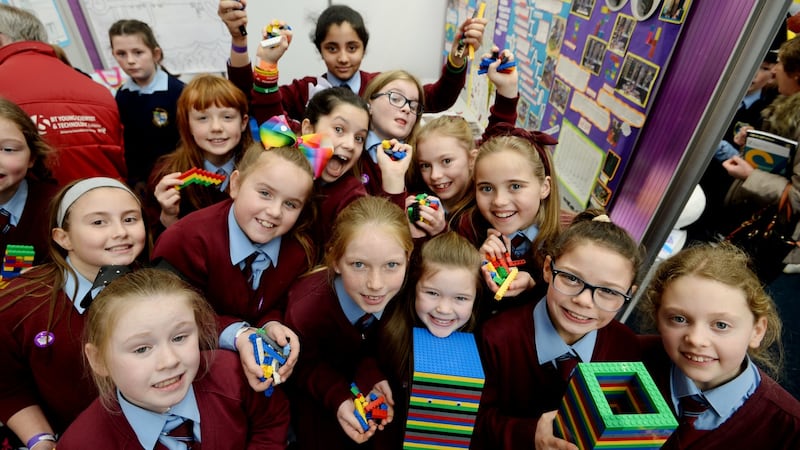Great science confronts big questions. Add a sense of excitement and unbridled curiosity about the world and it encapsulates the mood of the 2018 RDS Primary Science Fair.
The event, which takes place alongside the BT Young Scientist & Technology Exhibition, showcases the work of hundreds of primary school students whose research themes reflect the same sense of wonder and concerns as their older counterparts.
That means ecology, plastics, climate change, bugs and organics are to the fore, although associated noise levels reach much higher decibels compared with their second-level peers. This may be due to whole classes participating in projects, and briefings delivered to the public with palpable enthusiasm.
Questions this year include “Why do basketballs bounce?”, “Can a parachute save an egg from a two-storey fall?”, and “Why do onions make us cry? Can we investigate ways to prevent the tears?”

For sixth-year pupils of the Heath National School in Portlaoise, the big question is: “What is the optimum surface for garden snails to travel?” Their emphatic conclusion, according to Lucy Grace (12), following analysis of the movements of 50 snails in a variety of materials, is wet concrete.
“We have thousands of facts in our heads about snails now,” she adds. “It was lots of fun, mainly because it got us out of Irish.”
Offaly ecosystems
The question for pupils of Scoil Mhuire Naofa in Rhode, Co Offaly: “Is Offaly being faithful to the ecosystems which exist in our bogs?” According to Cian Cocoman (12), heavy turf-cutting machinery is removing large quantities of sphagnum moss, which is impairing the bogs’ ability to store water.
“We found there is damage to the ecosystem. The moss is not growing back. Our message is ‘Cut turf but don’t take too much’.”
The fair, according to RDS communications manager Diarmuid Hanifin, is designed to prompt “an investigation using Stem (science, technology, engineering and maths) skills”. Almost 3,000 primary school children are taking part over three days of the festival.
“Each Stem project operates on a whole-class basis, making sure that everyone gets involved. Each day of the fair sees a whole new set of primary school classes exhibit, maximising the number of schools participating,” he added.
RDS chief executive Michael Duffy said engaging with Stem-related investigations at an early education age has been shown to be very beneficial for students’ long-term engagement with such subjects. “Stem skills will be the foundation for many of the new jobs created this century.”
Next week the fair goes on the road to Limerick, where another 3,000 primary school students will take part over three days. In 2018, between the three venues of Dublin, Limerick and Belfast, almost 300 primary school class investigations will be exhibited by more than 7,000 pupils.









